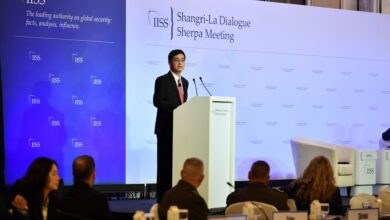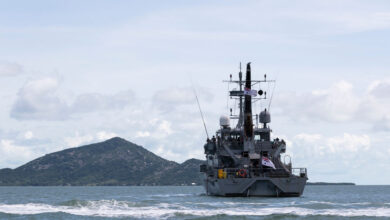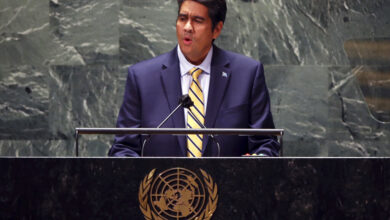Nepalis protest Chinese encroachment along border with PRC-controlled Tibet

The People’s Republic of China (PRC) once again is accused of violating a sovereign nation’s territory, this time in the mountains of Nepal, the latest encroachment in what’s seen as a disturbing pattern of land-and-sea grabs throughout the Indo-Pacific.
Students and activists protested in front of the PRC’s embassy in Kathmandu in late September 2020 over Chinese construction in the Humla district along Nepal’s northern border with PRC-controlled Tibet. Protesters carried signs and banners with slogans such as “Return back to your own boundary, China!” the Indian newspaper Deccan Herald reported.
Chinese crews have erected 11 buildings in a remote Nepali-claimed part of the district where only a single hut stood 15 years ago, locals official told The Kathmandu Post, an English-language newspaper. They said most of the structures were built by Chinese border and security forces, including one that houses security personnel.
Nepali officials visited the site in the Himalayas days before the protests and were greeted by Chinese army and security officials, who claimed the territory is part of the PRC, the Post reported.
The dispute may center on a border marker that had been missing for years before being discovered under snow and rubble in September 2020. After the marker was found, district officials said they would reinspect the boundaries to determine whether the new buildings are in Nepali or Chinese territory.
Nepal’s Ministry of Foreign Affairs initially confirmed a statement by the PRC’s embassy in Kathmandu that the buildings are on the Chinese side of the line. However, the Nepali Congress rejected that assertion, criticizing the ministry for not waiting until border inspectors issue a final report, The Times of India newspaper reported.
The resource-rich Tibetan plateau, pictured, is a massive freshwater repository and the source of most of Asia’s largest rivers, making it a place of immense strategic value. The PRC has controlled Tibet, officially an “autonomous region,” since its People’s Liberation Army (PLA) invaded the territory in the 1950s.
Experts say the Chinese Communist Party imposes coercive and repressive policies on Tibetans — including forced labor and cultural assimilation — just as it does with other ethnic groups in the PRC’s autonomous regions of Inner Mongolia and Xinjiang.
The PRC plans to spend U.S. $146 billion for infrastructure improvements in Tibet, including rail links with Nepal, where it also has invested heavily, Reuters reported in September 2020. Nepal is seen as a bulwark between the PRC and India, where Tibet’s spiritual leader, the Dalai Lama, has lived in exile since the invasion.
Elsewhere in the Himalayas, the PRC has been locked in a simmering dispute with India over their border, known as the Line of Actual Control. India has complained about Chinese road building and other construction in the area, as well as territorial violations by PLA troops. Long-running tensions spilled over into deadly clashes in 2020.
Such rebukes over Chinese intrusions have been amplified in recent months, particularly in relation to the South China Sea, where the PRC’s transgressions include constructing artificial features to house military installations.
Despite an international tribunal’s 2016 ruling dismissing its claims to much of the sea, the PRC has continued to flout maritime law, including by encroaching into the exclusive economic zones of other littoral nations.




